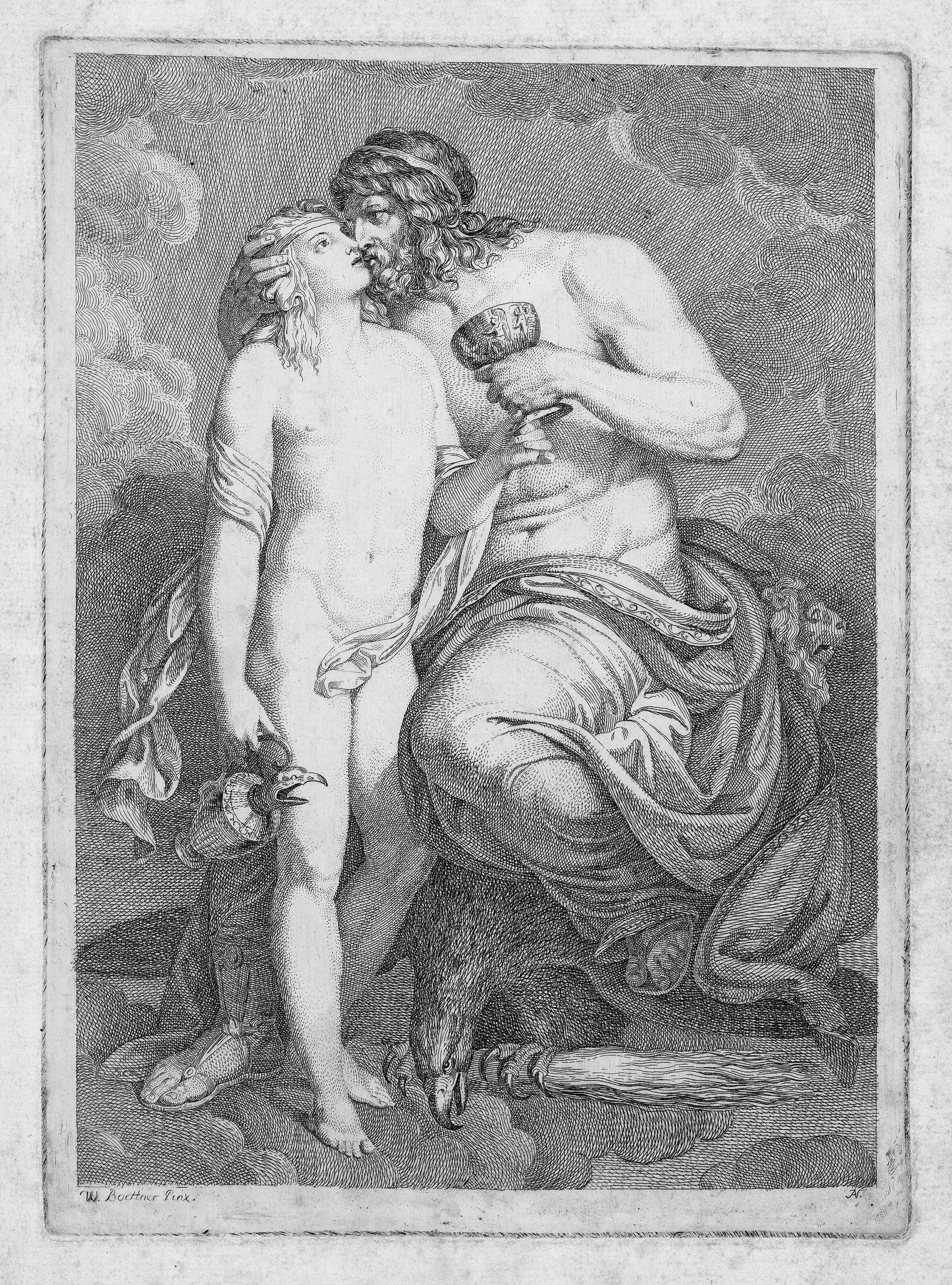Loading the page ...
Johann August Nahl the Younger
(1752 Zollikofen – 1825 Kassel)
Jupiter and Ganymede. Etching. 25.2 x 18.2 cm. Heller-Andresen 1, Nagler 4. Watermark: Lily in a double circle.
The composition of this etching derives from the scandalous fresco Jupiter and Ganymede made by Anton Raphael Mengs around 1758/59. It led to a deep rift between the artist and Johann Joachim Winckelmann. Mengs had painted the picture in the style of the frescoes in Pompeii and pretended it was an antique original. Winckelmann believed in its authenticity and rashly praised the fresco in his History of the Art of Antiquity. The painting was quickly exposed as a forgery, however, and Winckelmann never forgave Mengs the humiliation he suffered as a result.
The Hessian painter, Wilhelm Böttner (1752 Ziegenhain – 1805 Kassel), who was taught by Johann Heinrich Tischbein in Kassel, painted his version of Jupiter and Ganymede around 1780 in Rome. It attracted considerable attention and was praised by Goethe. Böttner drew heavily on Mengs’ prototypes, but his imagery places greater emphasis on psychological characterisation and the erotic element. The reputation of this painting was presumably the reason for the present reproductive engraving by Johann August Nahl, who had also studied under Tischbein in Kassel and been friends with Böttner since the years they spent together as apprentices in Paris. Nahl excelled above all as a painter both in Rome and after his return to Kassel in 1792, initially working in a rococo-style classical idiom that gave way around 1800 to a more purist, neo-classical approach. Only a few etchings in the artist’s hand are known, which he obviously made for private consumption and, given their modest circulation, are very rare.
The Italian paper Nahl used is an indication that he probably made the etching in Rome, where he stayed from 1774 to 1781, in all likelihood shortly after the sensational debut of his friend Böttner. The print has been executed in a subtle and sophisticated etching technique which fully accords with the classical elegance of the original. The dense, intricate hatching patterns produce a soft chiaroscuro effect.
A very fine, nuanced early impression from the uncleaned plate, with numerous needle scratches along the platemark and even margins. Slight foxing, minor ageing, otherwise in excellent condition.
